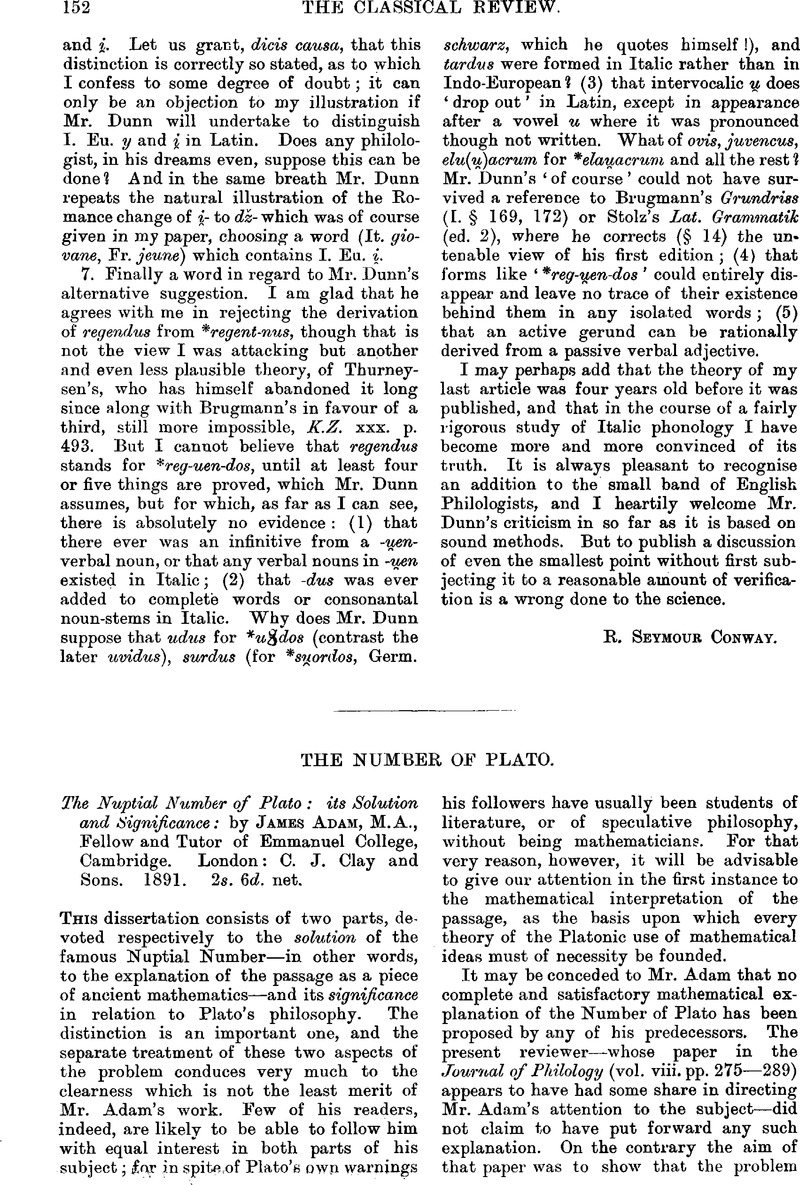No CrossRef data available.
Published online by Cambridge University Press: 27 October 2009

page 153 note 1 At this point there seems to me to be some flaw in Mr. Adam's exposition (p. 21). He takes τοσαυ-τκις to stand for ‘36 times.’ On this supposition the words mean ‘a square number, viz. 36 times a hundred.’ This gives 3600, which is a square, but not the square intended (36002). After the words ἴκατν τοσαυτκις we expect the whole number, not the side of which it is a square. Does Mr. Adam take ![]() as an epexegesis of the word
as an epexegesis of the word ![]() alone, so as to be = ‘so many (viz. 36) hundreds of times’?
alone, so as to be = ‘so many (viz. 36) hundreds of times’?
It would be easy to illustrate the use of ![]() and
and ![]() to stand for a numeral or adjective which it would be clumsy in point of style or otherwise undesirable to repeat: e.g. Rep. 615 B
to stand for a numeral or adjective which it would be clumsy in point of style or otherwise undesirable to repeat: e.g. Rep. 615 B ![]() . So
. So ![]() in the description of tragedy as
in the description of tragedy as ![]() .
.